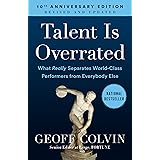The concept that your “network is your net worth” often sounds like an encouraging but somewhat elusive ideal. However, as the accompanying video powerfully illustrates, this principle holds immense practical weight, offering a pathway to significant career advancement and personal growth. Many successful individuals attribute a substantial part of their achievements to the quality and breadth of their professional network. Building a robust network does not happen overnight, yet it requires a deliberate strategy and a willingness to engage thoughtfully with others.
For those starting with limited connections, or aspiring to reach higher echelons in their chosen field, the initial steps can seem daunting. This comprehensive guide expands on the video’s core insights, providing actionable strategies to cultivate a powerful network, make meaningful connections, and ultimately, amplify your professional value over time. We explore the essential mindset, practical tactics for outreach, the art of nurturing relationships, and the critical importance of continuously enhancing your own professional appeal.
Cultivating a Powerful Networking Mindset
Before diving into specific tactics, establishing the correct mental framework is paramount for effective professional networking. Successful networking hinges on understanding that every interaction, particularly with high-value individuals, is fundamentally an exchange of value. People often have incredibly busy schedules, making their attention a highly guarded resource. Consider that your dream connection might be 10 to 100 times busier than you currently are, meaning you must approach them with a clear value proposition.
Understanding the Value Exchange in Professional Connections
Every significant relationship, whether personal or professional, thrives on mutual value. When seeking to connect with someone, especially those in demanding positions, you must quickly demonstrate how you can offer something of worth. This value is not exclusively financial; it encompasses a broader spectrum that supports a meaningful interaction.
Financial value often relates to direct business opportunities or monetary gain that can arise from a connection. Social value involves shared interests, a mutual community, or simply enjoying another person’s company, fostering a desire to connect further. Emotional value can stem from feeling understood, supported, or inspired, or from the simple human desire to help someone, to ‘pay it forward.’
Identifying the type of value you can offer, and tailoring it to the specific individual, becomes your competitive advantage. This approach ensures your outreach cuts through the noise and compels a busy person to pay attention, initiating the crucial first step in building a long-term professional relationship.
Mastering Initial Connections: From Cold Outreach to Warm Introductions
Making your first few connections is foundational to expanding your professional network. This process involves strategic identification of targets, crafting compelling outreach, and navigating initial conversations effectively. By following a structured approach, you can significantly increase your chances of success and overcome the common hurdles associated with starting from scratch.
Strategically Identifying Your Networking Targets
Begin by segmenting the individuals you wish to connect with into two distinct categories. First, identify people you can reasonably access, such as current or former colleagues, classmates, recent alumni from your educational institution, or members of your local community. These individuals often share a common background or immediate context, making initial contact more natural.
Second, consider individuals who are slightly more out of reach but still within your potential grasp. For instance, aspiring to work at a major tech company like Microsoft means you likely won’t connect directly with the CEO for a job offer. Instead, target fellow software engineers or product managers on platforms like LinkedIn who are closer to the roles you desire. Building relationships with these individuals can eventually lead to introductions to higher-level decision-makers, such as hiring managers.
This tiered approach, as demonstrated by the speaker’s experience cold-calling into Goldman Sachs, allows you to build momentum. Starting with more accessible contacts provides valuable practice and can lead to internal referrals, which are far more potent than cold outreach alone.
Crafting Cold Emails That Command Attention
Cold outreach, particularly via email, remains a powerful tool when executed correctly. The goal is to avoid the pitfalls of generic, lengthy, and uninspired messages that busy professionals instantly dismiss. Your cold email must reflect the core principle of adding value and standing out in a crowded inbox.
To craft an effective cold email, follow these concrete steps. Firstly, conduct thorough research on the person you are contacting. Delve into their LinkedIn profile, recent publications, company news, or any public information that reveals their values, goals, and current challenges. Understanding who they are as a human being allows for a more authentic connection.
Secondly, customize your outreach for that specific person. Replace generic salutations with personalized references, such as mentioning an article they wrote or a project they led. For example, instead of “Hi, I want your job,” try “Hey Josh, I just read your article on [Topic X], and it inspired me to take [Specific Action].” This demonstrates genuine interest and shows you invested time in understanding their work.
Lastly, ensure your message is punchy and concise. Busy individuals scan emails quickly, especially on mobile devices. Avoid long blocks of text; get straight to the point while maintaining personalization. A concise message respects their time and increases the likelihood of a full read. Be prepared for rejection; most cold emails will be ignored. However, by adhering to these principles, you can expect a response rate of around 20-30% for every ten emails sent, making perseverance essential in overcoming the fear of rejection.
Transforming First Conversations into Lasting Opportunities
Once your cold emails lead to scheduled conversations, the next step is to make these interactions count. Successfully navigating these initial discussions involves two critical elements: mastering small talk and arriving thoroughly prepared.
Small talk, often undervalued, serves as an essential initial modulation, allowing you to gauge the other person’s energy and build preliminary rapport. It’s not truly about the weather; it’s about establishing a human connection and finding common ground before delving into deeper professional topics. Pay attention to their cues to understand if they are receptive to a brief, casual exchange.
Equally important is coming into the conversation exceptionally prepared. Reflect on what initially drew you to this person—a specific career choice, a notable success, or a particular area of expertise. Leverage this genuine interest to formulate specific, insightful questions. Instead of asking “What’s your job like?” inquire, “I saw you worked on the XYZ deal; what were your key learnings from that experience?” This level of preparation demonstrates respect for their time and genuine curiosity, setting you apart from the many others who ask generic questions. This also shows you watched the video to learn how to prepare effectively.
If the conversation progresses positively, it is crucial to implement a call to action. Politely ask for an introduction to someone else in their network who might be relevant to your goals. Warm introductions are significantly more effective than cold emails, creating a compounding effect where each new connection opens doors to several more. This systematic approach allows you to build a powerful network far more efficiently than sending countless cold emails alone.
The Long Game: Nurturing Relationships and Sustaining Value
While getting your foot in the door is an important initial step, the true power of professional networking lies in playing the long game. This involves consistently nurturing relationships and continuously adding value over time. As Naval Ravikant wisely advises, “Play long-term games with long-term people.” Building and maintaining meaningful connections is an ongoing process that yields compounding returns.
Building Unshakeable Trust Through Consistency and Authenticity
Trust forms the bedrock of any enduring relationship. In professional networking, trust is built through three key elements: reliability, consistency, and authenticity. Reliability means consistently doing what you say you will do, demonstrating dependability in all interactions. Consistency refers to how regularly you engage with someone and how dependable your reliability remains over time. Showing up predictably and positively reinforces your commitment to the relationship.
Authenticity and honesty are equally vital. People can instinctively detect insincerity or a transactional mindset. Approach your interactions with genuine interest and a desire to connect, rather than a purely self-serving agenda. A simple, yet profoundly effective way to put these principles into practice is by sending thoughtful thank-you notes. Move beyond generic messages like “Thanks for your time” by referencing a specific point from your conversation or a learning you gained. This personalized touch makes your interaction memorable and reinforces your appreciation.
Furthermore, maintaining and deepening relationships involves sharing genuine touch points. This could be a quick congratulatory message on a recent milestone, checking in on someone’s well-being, or sharing a relevant article. These small, consistent gestures demonstrate that you value the relationship beyond a single interaction, fostering a sense of mutual respect and connection.
Strategically Adding Value Without Expectation
People naturally gravitate towards those who consistently add value to their lives. In a professional context, proactively seeking to understand and address others’ goals and challenges is a powerful way to provide value. Begin by asking strategic questions such as, “What are your top goals right now?” or “What challenges are you currently facing?” This insight allows you to identify specific ways you can be helpful.
The value you offer can vary widely. It might be as simple as sending a job posting you thought would interest them, or sharing an article on a topic you know they care about. On a more complex level, you could position yourself as a “super-connector,” introducing people from different fields who might benefit from knowing each other. The key is to deliver this value without any immediate expectation of reciprocity. Genuine kindness and a giving spirit build a strong reputation, attracting more opportunities and connections back to you over time.
This ‘give, give, give’ philosophy creates positive karma and a powerful flywheel effect. When you consistently add value, you become someone people want to associate with, trust, and even actively help. This reputation compounds, enhancing your overall standing and opening doors that might otherwise remain closed. The more you contribute, the more you receive in return, not out of obligation, but out of genuine appreciation and a desire to support a valuable connection.
Elevating Your Own Value: Becoming the Networked Professional Everyone Wants to Know
While building a robust network is critical, a parallel and equally important endeavor is continuously building and improving your own value. In the initial stages of a career, individuals often hustle to gain attention and secure their first connections. However, the ultimate aspiration for many professionals is to become the person everyone else actively seeks to network with. This shift requires a strategic focus on personal growth and professional development.
Scaling Your Personal Brand and Professional Success
To operate at the most elite levels of professional networking, your intrinsic value must scale in proportion to your network. Influential figures like Mark Cuban are unlikely to invest their valuable time with you, regardless of your connections, unless you can also offer something of substantial value to them. Therefore, simultaneously with building your network, you must actively build your own value.
This personal value can manifest in various forms, including achieving significant success in your career, cultivating a strong personal brand, or building an audience in your chosen field. Fortunately, the current digital age offers unprecedented opportunities to accomplish all of these without needing anyone’s permission. For example, creating compelling online content, starting a new business venture, or contributing to open-source projects can establish implied credibility and attract like-minded professionals.
The speaker’s journey, from creating “cringey videos” to building an audience and starting their own company, exemplifies this principle. These initiatives, undertaken independently, cultivated a strong reputation and made them an attractive connection for other top creators and business leaders. This highlights that many avenues to building credibility and value do not require external validation or permission; they simply require initiative and a long-term commitment. Embrace the mindset that this process will take years to fully pay off, often involving significant effort and learning from setbacks. However, by consistently building your own value and strategically applying these networking principles, you will cultivate a professional network worth millions, if not billions, of dollars.









